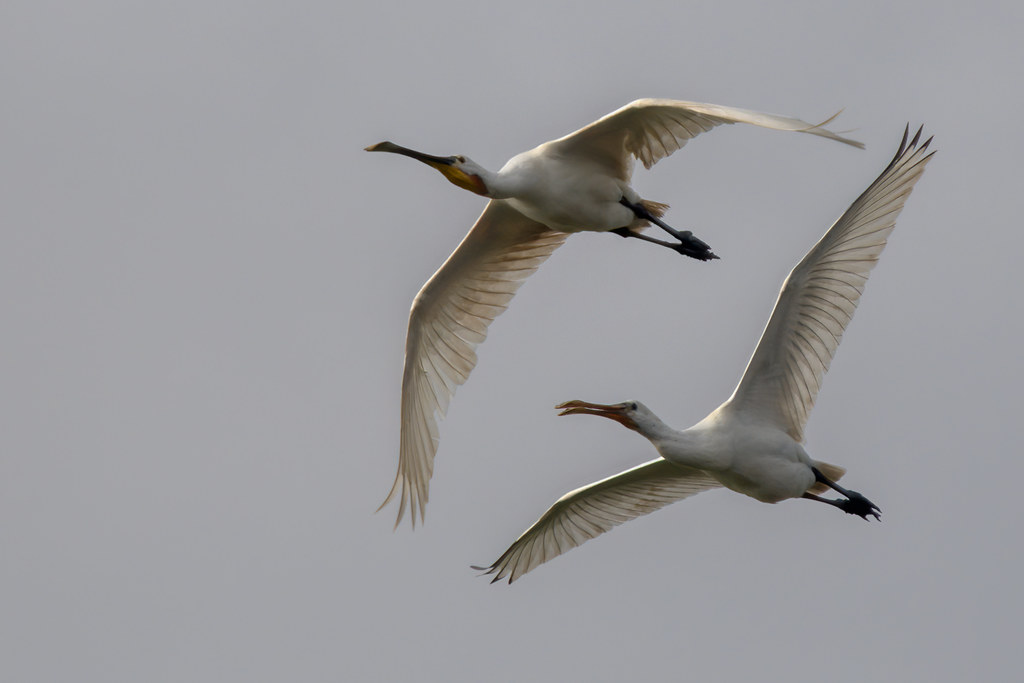
Tim writes: these two Spoonbills flew over me at St Aidan’s RSPB reserve in West Yorkshire in September. Spoonbills fly with their necks outstretched unlike herons and egrets that tuck their necks in while flying. This is an adult on the left plus a juvenile with black wing tips and I was pleased to catch the youngster with its beak open. Spoonbills have been nesting in the Aire Valley in West Yorkshire for four years now so visitors are quite blasé about Spoonbill sightings, but getting a half-decent photograph isn’t easy.
Spoonbills are a success story in Britain. They bred historically in East Anglia until the 17th century, then ceased breeding until the 1990s, though they continued to appear as non-breeding visitors. Bizarrely the first successful recent nest was in 1999 on saltmarsh on the Ribble Estuary in Lancashire when a pair raised two young. This is bizarre because they usually nest in trees among herons and egrets and northern England wasn’t the expected area of first recolonisation. Six pairs nested at Holkham in Norfolk in 2010 and there is now a well-established population of about 20 pairs. They have bred in Yorkshire since 2016, though they never reappeared on their saltmarsh site in Lancashire.
The scientific name Platalea leucorodia is not as interesting as you might think. Platalea is the Latin name for a Spoonbill and leucorodia is the Greek word for it, though it literally translates as white heron (leukos=white, erodios=heron).
[registration_form]